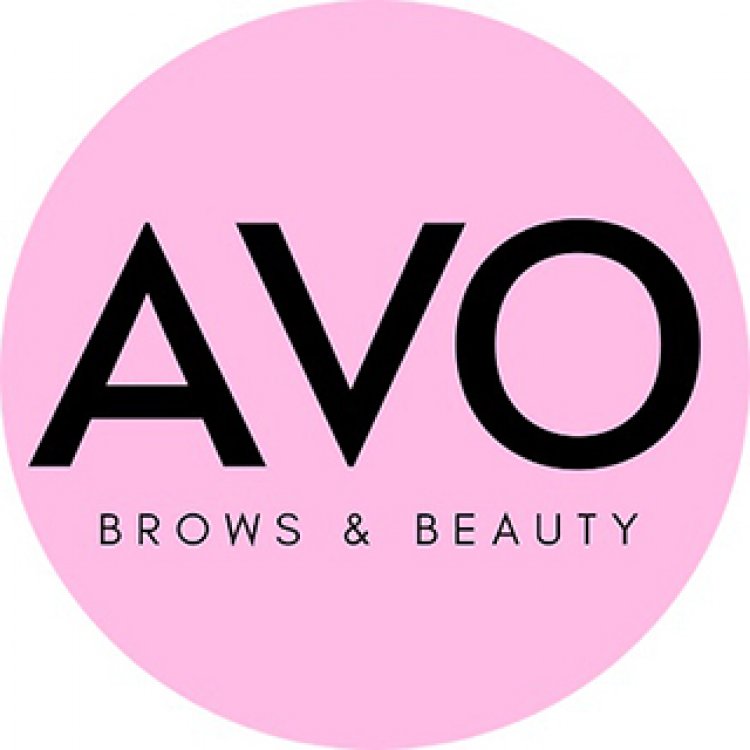How the DEI backlash will impact gender equality at work
The headlines about companies quietly or boldly cancelling diversity, equity, and inclusion efforts, or scaling back commitments, don’t seem to be disappearing anytime soon. McDonald’s recently joined the list of companies who are shifting DEI strategies given the changing legal landscape in light of the U.S. Supreme Court overturning affirmative action. Boeing Company, Ford Motor, Harley Davidson, Lowe’s Cos, and Walmart are just a few of the companies rolling back their DEI initiatives last year as well. And as these initiatives get re-evaluated, this will have a significant impact on women’s advancement in the workplace. “For the first time in 10 years, we are seeing a drop in companies’ commitment to both gender and racial diversity,” Rachel Thomas, cofounder and CEO of LeanIn, says. “That’s, of course, concerning for us.” According to the LeanIn and McKinsey Women in the Workplace report, which is the one of the largest studies reflecting the state of women in the U.S. workplace, the number of companies who identified gender diversity as a high priority dropped: 87% in 2019 to 78% in 2024. This reflects what McDonald’s also shared, stating that it will “retire specific goals for achieving diversity at senior leadership levels.” According to a USA Today analysis, women are outnumbered 5 to 1 in senior leadership when looking at the country’s 100 largest publicly traded companies, with the gap even wider for women of color. Many of the initiatives that have been key in helping women in advance in their career could be scaled back or coming to an end. As leaders, here’s how we can be doing our part to ensure for women in the workplace don’t fall even further behind. Ask about what is being measured If your company is no longer setting goals for achieving diversity at senior leadership levels, ask the question: What is being measured? If you can no longer set goals, there are a number of other ways to see how women in particular are performing in your organization and if they are advancing into senior leadership roles. Here are some questions to ask: What do succession plans look like for senior roles? How many women vs. men have career development plans? With the help of legal and human resources departments, are we looking to see how women vs. men are being rated on their performance reviews? How does that translate into who is receiving merit increases, bonuses, and stock grants? Are there any inequities when it comes to pay? Are we looking at attrition rates to see if women are leaving the organization faster than men? Are we looking at exit interview data to see if the reasons women are leaving are different than men? What do we see on Glassdoor reviews about what it’s like to work at our organization? What gets measured gets done. We would never run a business and not have goals and expectations on how to perform. We should hold ourselves as leaders accountable to ensure we are evaluating and treating every individual fairly and equitably, so they have an opportunity to reach their potential on our teams. Dig into what women are saying McDonald’s says it will stop participating in external surveys that measure corporate diversity, which includes the evolving state of women in the workplace. Seramount, an organization specializing in helping companies develop strategies and solutions to create more inclusive workplaces, has two key surveys which companies like McDonald’s may miss out on. 100 Best Companies investigates all the policies and practices impacting not just mothers, but all parents, at your organization and benchmarks against other companies. Best Companies for Multicultural Women shines a spotlight on organizations advancing multicultural women into leadership positions, including reviewing leadership and development opportunities and management accountability for promotions, benchmarking against other companies. External surveys like these are critical tools to holding companies accountable for measuring their progress both internally and externally. Many companies will still do annual employee engagement surveys to measure and understand how engaged, happy, and motivated individuals may or may not feel. They can cover a wide array of questions including how employees feel about their boss, their team, and the company. It can also ask questions about recognition, career development opportunities, and more, and get an understanding if individuals are considering leaving or plan to stay. These surveys are an important opportunity to dig into what women are saying. If your company has scaled back initiatives that specifically supported women, you can get a sense of what the impact has been. Are women lacking sponsorship to help them advance their careers? Are they feeling stuck in their careers, being promised promotions that don’t materialize? Are they receiving little to no feedback from their boss? Don’t ignore these powerful insights that w

The headlines about companies quietly or boldly cancelling diversity, equity, and inclusion efforts, or scaling back commitments, don’t seem to be disappearing anytime soon. McDonald’s recently joined the list of companies who are shifting DEI strategies given the changing legal landscape in light of the U.S. Supreme Court overturning affirmative action. Boeing Company, Ford Motor, Harley Davidson, Lowe’s Cos, and Walmart are just a few of the companies rolling back their DEI initiatives last year as well. And as these initiatives get re-evaluated, this will have a significant impact on women’s advancement in the workplace.
“For the first time in 10 years, we are seeing a drop in companies’ commitment to both gender and racial diversity,” Rachel Thomas, cofounder and CEO of LeanIn, says. “That’s, of course, concerning for us.” According to the LeanIn and McKinsey Women in the Workplace report, which is the one of the largest studies reflecting the state of women in the U.S. workplace, the number of companies who identified gender diversity as a high priority dropped: 87% in 2019 to 78% in 2024. This reflects what McDonald’s also shared, stating that it will “retire specific goals for achieving diversity at senior leadership levels.”
According to a USA Today analysis, women are outnumbered 5 to 1 in senior leadership when looking at the country’s 100 largest publicly traded companies, with the gap even wider for women of color. Many of the initiatives that have been key in helping women in advance in their career could be scaled back or coming to an end. As leaders, here’s how we can be doing our part to ensure for women in the workplace don’t fall even further behind.
Ask about what is being measured
If your company is no longer setting goals for achieving diversity at senior leadership levels, ask the question: What is being measured? If you can no longer set goals, there are a number of other ways to see how women in particular are performing in your organization and if they are advancing into senior leadership roles.
Here are some questions to ask:
- What do succession plans look like for senior roles? How many women vs. men have career development plans?
- With the help of legal and human resources departments, are we looking to see how women vs. men are being rated on their performance reviews? How does that translate into who is receiving merit increases, bonuses, and stock grants? Are there any inequities when it comes to pay?
- Are we looking at attrition rates to see if women are leaving the organization faster than men? Are we looking at exit interview data to see if the reasons women are leaving are different than men? What do we see on Glassdoor reviews about what it’s like to work at our organization?
What gets measured gets done. We would never run a business and not have goals and expectations on how to perform. We should hold ourselves as leaders accountable to ensure we are evaluating and treating every individual fairly and equitably, so they have an opportunity to reach their potential on our teams.
Dig into what women are saying
McDonald’s says it will stop participating in external surveys that measure corporate diversity, which includes the evolving state of women in the workplace. Seramount, an organization specializing in helping companies develop strategies and solutions to create more inclusive workplaces, has two key surveys which companies like McDonald’s may miss out on.
100 Best Companies investigates all the policies and practices impacting not just mothers, but all parents, at your organization and benchmarks against other companies. Best Companies for Multicultural Women shines a spotlight on organizations advancing multicultural women into leadership positions, including reviewing leadership and development opportunities and management accountability for promotions, benchmarking against other companies. External surveys like these are critical tools to holding companies accountable for measuring their progress both internally and externally.
Many companies will still do annual employee engagement surveys to measure and understand how engaged, happy, and motivated individuals may or may not feel. They can cover a wide array of questions including how employees feel about their boss, their team, and the company. It can also ask questions about recognition, career development opportunities, and more, and get an understanding if individuals are considering leaving or plan to stay.
These surveys are an important opportunity to dig into what women are saying. If your company has scaled back initiatives that specifically supported women, you can get a sense of what the impact has been. Are women lacking sponsorship to help them advance their careers? Are they feeling stuck in their careers, being promised promotions that don’t materialize? Are they receiving little to no feedback from their boss? Don’t ignore these powerful insights that women have shared with you; use this data as an opportunity to bring back resources and craft other solutions to bridge the gap women are experiencing at work.
Drive women’s employee resource groups
With the backlash against DEI, we may see the burden be placed back on employee resource groups to help build workplaces where all employees thrive. ERGs may once again become the default, go-to “DEI strategy.” This is the time not just to support your women’s resource group by sharing invites and showing up to events, but to help drive the success of the group.
We need more men to step up and serve as an executive sponsor for women’s resource groups. We need senior leaders to offer dollars from their own budgets to help sponsor events when DEI budgets are being slashed. We need to open up our networks, bring in speakers who can offer practical advice and guidance on how to deliver a strong presentation, how to manage up and across, how to influence, how to set boundaries, how to transition back to work post parental leave, and more. We need to ensure we are covering topics impacting all women, including white women and women of color. Finally, we need to be shining a light on the individuals who help run our women’s resource groups and make sure they get the credit and recognition they deserve for not just doing office work, but rather for being culture bearers for the organization.
Ensure benefits don’t get cut
The Business Group on Health estimates that in 2025 health care costs will jump by almost 8%. Companies say they are trying hard to not pass on costs to their employees, as employers and their insurers are expected to battle over increased costs. As a result, companies may cut back on non-core offerings. The question is this: who determines what is considered a core offering or not?
For example, Netflix has been long held as a gold standard for its generous paid parental leave program. New reports claim Netflix has been quietly pulling back on the benefit. Google, General Mills, and other companies have closed on-site childcare facilities; Google’s closure was tied to cost cutting while General Mills claimed low utilization. Will companies consider Milk stork, a benefit for shipping breast milk while traveling, too expensive? Will they continue to offer designated space for lactation rooms, or will these be converted into meeting space? Will companies consider fertility benefits as a non-core offering? How about time off for pregnancy loss? Watch for what benefits are being kept and what’s being cut and question the definition of what’s considered a core offering and who determines this.
Stop biased feedback in its tracks
Finally, we all have an opportunity to stop biased feedback in its tracks in our workplaces. As I discuss in my book Reimagine Inclusion: Debunking 13 Myths to Transform Your Workplace, we have to watch out for biased language when evaluating performance. Ask yourself if you have ever been in a conversation where a woman’s performance was being judged using the following language:
- Is she being abrasive or direct?
- Is she a showoff or has deep expertise?
- Is she difficult or sharing her different opinion?
- Is she too quiet or being an active listener?
- Is she not committed to her career? Or is that our perception because she’s a mother?
And that’s just the tip of the iceberg of what we might hear, from both men and women leaders. When we find ourselves in these conversations, reflect and consider if we would use this language to describe a man’s performance. Ask each other more open-ended questions to get to the facts, the evidence of what she has accomplished, to break through the stereotypes and bias.
According to LeanIn and McKinsey, it will take close to nearly 50 years for women to reach parity in corporate America. This likely doesn’t take into account many of the DEI initiatives that will be scaled back, no doubt erasing progress that has been made. And each of us can advocate, stand up and play a role in ensuring that women not just join and stay in our workplaces, but advance and get the credit and recognition they have earned and deserve.






















